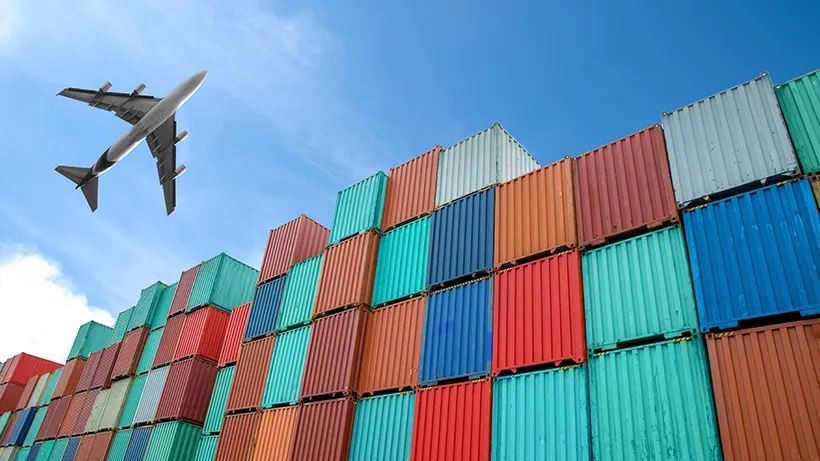SMEs should secure their sales receivables more effectively

Credit insurance and letters of credit help avert unnecessary credit losses, especially on exotic export markets.
Most SMEs engaged in exports have rather weak protection against potential credit losses.
According to the latest SME Barometer Survey, 15 per cent of export companies use credit insurance to secure their sales receivables. Nine per cent of respondents relied on letters of credit with payment time, while the same percentage used letters of credit at sight.
Respondents were allowed to tick more than one answer to questions about financial instruments in export trade. Nearly 6,000 SMEs responded to the barometer published in mid-September. One in five engaged in exports or business abroad.
Eeva-Maija Pietikäinen, Head of Trade Finance at Finnvera, recommends that SMEs secure their sales receivables, especially in what are known as exotic countries.
“Credit insurance is the simplest means of protection and particularly well suited to continuous, short-term trading. We are also able to provide one-off policies, that is, insurance for a single transaction – something very important for small actors,” Pietikäinen says.
Finnvera can grant credit insurance only for countries that are not encompassed by the EU rules on State subsidies.
The insurance also includes a self-risk portion of ten per cent and the receivables must be uncontested.
“The company can apply for compensation from Finnvera when the payment is 90 days overdue,” Pietikäinen explains.
Dozens of destinations
A letter of credit is also suitable for protecting companies in short-term transactions. In a letter of credit, the buyer-customer’s bank undertakes in writing to pay the purchase price to the seller.
Pietikäinen sees it as a challenge that some countries do not necessarily have a bank that could assume the responsibility for a letter of credit.
“One answer is to use pre-payment, which means that at least some of the purchase price is paid upfront. This procedure can be applied, in particular, in the most exotic countries,” Pietikäinen says.
Finnvera has commitments in 90 countries, half of which are classified as exotic.
Raija Rissanen, Vice President, Country and Bank Risks, at Finnvera, bases her definition of an exotic country on distance, culture and differences in operating environment. The most exotic destinations where Finnish companies export their products backed by Finnvera’s guarantees include Burkina Faso, Trinidad & Tobago, and Malawi.
Besides countries in Africa and South and Central America, the list contains countries in Asia and the Middle East.
“Most of our commitments concern buyer credits. This means that the credit is granted directly to the Finnish exporter’s buyer-customer abroad. The bank provides the financing and Finnvera shares the risk with the bank. Such credits are often worth over a hundred million euros. Credit insurance and letters of credit are typically used for smaller transactions,” Rissanen explains.
FACT: Protection mechanisms for SMEs
- It pays for SMEs to use secured payment terms when doing business, or to protect their sales receivables, in order to avoid credit losses.
- The most common protection mechanisms are credit insurance, letters of credit and the Bill of Exchange Guarantee.
Credit insurance: Finnvera grants credit insurance directly to the export company. The exporter signs an agreement with Finnvera. The insurance is suited to continuous, short-term trading.
EU legislation prohibits Finnvera from granting credit insurance for exports to European countries and a few countries outside Europe. See the list here.
If the risks are realised, the insurance includes a self-risk portion of ten per cent. The company can seek compensation after a payment delay of 90 days provided that the claim is uncontested.
Credit insurance also suits small transactions: For example, Finnvera has credit limits of EUR 10,000.
Letter of credit: A letter of credit means that the buyer-customer’s bank undertakes in writing to pay the purchase price to the seller, i.e. the bank issues the letter of credit. Similarly, the seller has an agreement with its own bank, which confirms the letter of credit. The bank, in turn, can share the risk associated with a foreign bank with Finnvera by applying for Finnvera’s Letter of Credit Guarantee. In all cases, the exporter does not necessarily know that a Letter of Credit Guarantee has been used.
Bill of Exchange Guarantee: A Bill of Exchange Guarantee is ideal for fairly small capital goods transactions and continuous exports.
The bill of exchange serves both the exporter and the buyer because the exporter is paid in cash while the buyer is given payment time. Finnvera’s Bill of Exchange Guarantee, in turn, protects the bank from any credit losses that might arise.
The exporter applies for the guarantee from Finnvera and submits credit data and financial statements on both the buyer and the guarantor, if any, over the past three to four years.
It is essential that the financing is planned well in advance before the export transaction. In this way it is possible to select the payment method that suits each deal.
Read more about the Credit Risk Guarantee and the Export Receivables Guarantee
Also, read more about the Bill of Exchange Guarantee
Text: Kimmo Koivikko
